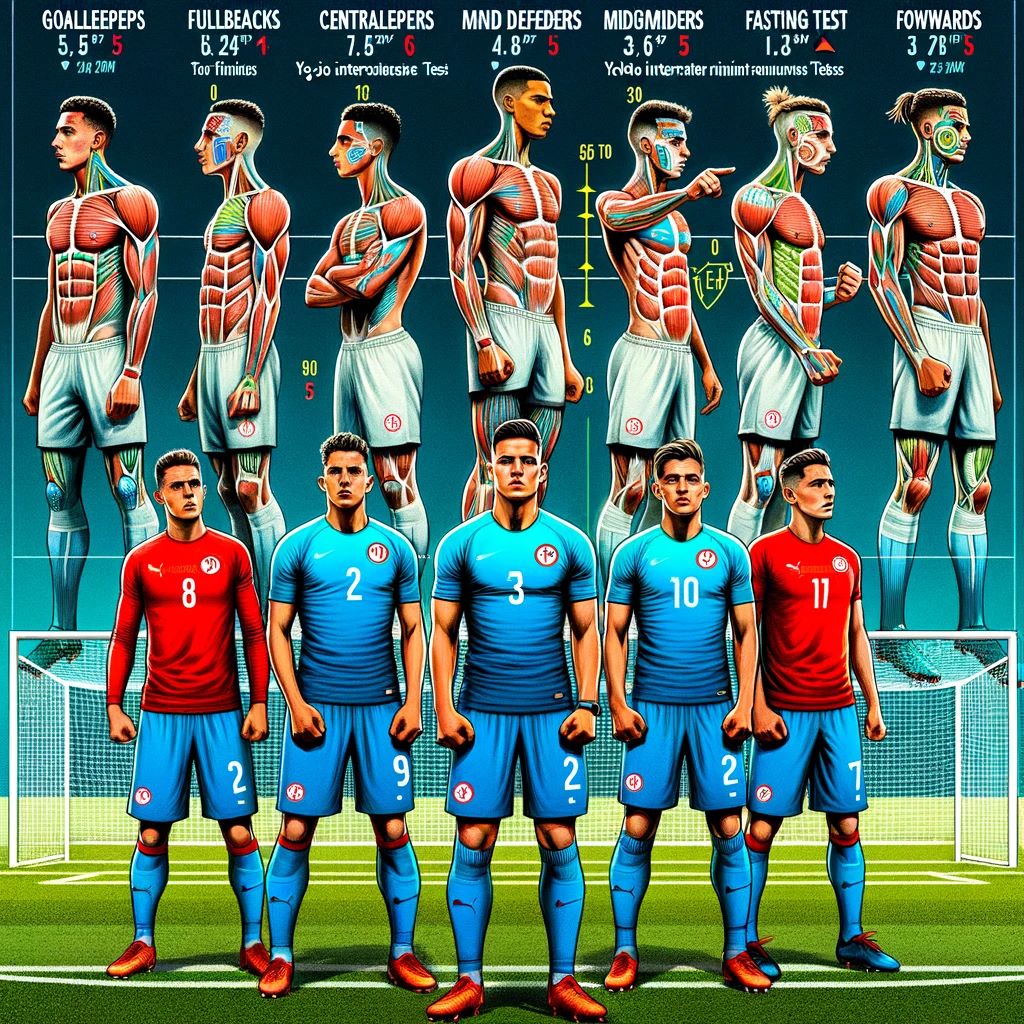Physical and anthropometric profile of Tunisian elite football players according to their playing position: A longitudinal study
DOI:
https://doi.org/10.61838/kman.tjssm.1.1.6Keywords:
Anthropometry, Elite soccer, Performance, Training, YoungAbstract
Background: In elite youth soccer, the extent to which anthropometric and physical fitness parameters vary according to playing positions remains unclear. Identifying and quantifying these differences is crucial for informing targeted training interventions.
Objectives: We aimed to investigate the evolution anthropometric and physical profiles in Tunisian elite youth soccer players during one season, and to analyze differences between players according to their playing position.
Methods: Sixty-two subjects (15.3±0.2 years, 69.4±6.4 kg, 176.9±4.8 cm) playing for the top four professional football clubs in Tunisia took part in the study. They were divided into five groups according to their playing position: goalkeepers (n=10), fullbacks (n=14), central defenders (n=11), midfielders (n=15) and forwards (n=12). Various anthropometric measurements, fitness tests assessing aerobic and anaerobic performance were performed at two times (T): T1 (3 weeks after the beginning of the preparation period), and T2 (end of the competitive period).
Results: Football players across all positions exhibited significant anthropometric growth, particularly in height, with increases from small to moderate (p < 0.001; effect size (ES) = 0.30 to 0.57). Weight changes were non-significant (p = 0.01 to 0.14; ES = 0.01 to 0.14), while fat mass reductions across positions were slightly more pronounced (p = 0.05 to 0.25; ES = 0.09 to 0.25). Performance metrics revealed substantial improvements, particularly in the 5-Jump Test, where forwards excelled (p < 0.001; ES = 1.07), and in sprinting events, where consistent progress was noted across all positions (p < 0.001; ES = 0.16 to 0.33). The Yo-Yo Intermittent Recovery Test exhibited significant enhancements, again with forwards achieving the greatest gains (p < 0.001; ES = 3.01).
Conclusion: The study emphasizes the need for position-specific training in youth football, highlighting how physical and anthropometric characteristics vary by playing position. The results suggest that tailored training can enhance performance and development in young players, reinforcing the importance of customized approaches for different positions in elite youth soccer. This approach not only improves player performance but also aids in effective talent identification and injury prevention of youth soccer players.

Downloads
Additional Files
Published
Issue
Section
License
Copyright (c) 2023 Mohamed Ali Hammami, Karim Ben Ayed, Rim Mekni, Hatem Ghouili, Mohamed Mansour Bouzouraa, Khaled Trabelsi, Lamia Ben Izzeddine (Author)

This work is licensed under a Creative Commons Attribution-NonCommercial 4.0 International License.






